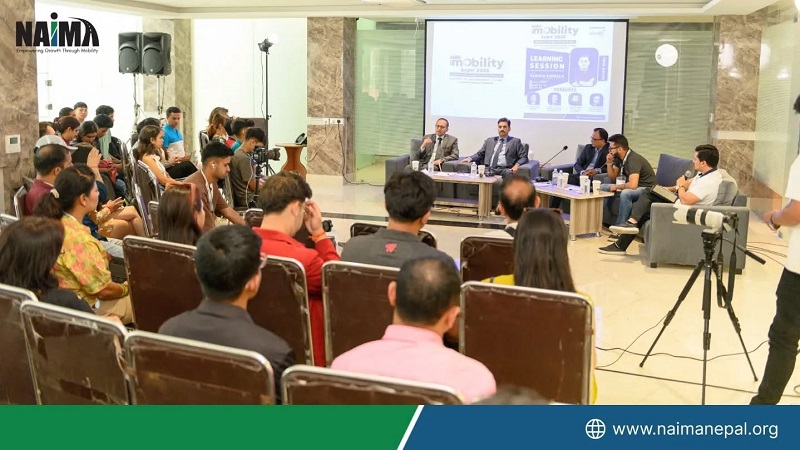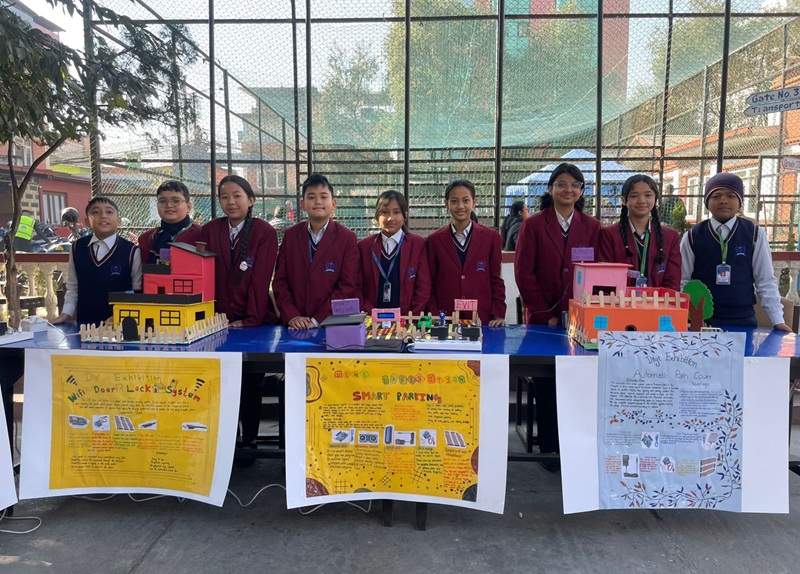Driving Forward: How Finance is Powering Nepal’s Mobility Revolution at NAIMA Expo 2025
10th August 2025, Kathmandu
The future of mobility in Nepal is more than just about new vehicles; it’s about access, innovation, and inclusion. This was the resounding theme of a compelling panel discussion at the NAIMA Nepal Mobility Expo 2025, titled “Role of Financial Sector in Mobility for All.”
Finance Fueling Nepal’s Mobility Revolution
Hosted by the charismatic entrepreneur Sanjog Koirala, the session brought together a powerhouse of financial and industry leaders to dissect how the financial sector is becoming the engine of Nepal’s mobility transformation. The discussion went beyond traditional loans, delving into the practical ways finance can make mobility accessible to a wider populace.
Key Takeaways from the Panel Discussion
Innovative Payment Solutions: The panelists highlighted the growing importance of digital payment systems and fintech solutions in simplifying the vehicle purchasing process. From QR code payments to mobile wallet integrations, these innovations are not only convenient but also crucial for financial inclusion, especially in a country with a growing digital economy.
Inclusive Financing Models: The conversation emphasized the need for flexible and tailored financing options. The panelists discussed how micro-financing, lease-to-own models, and partnerships with ride-sharing platforms can open up mobility opportunities for small entrepreneurs and individuals who may not qualify for traditional bank loans.
The Rise of Green Financing: A significant portion of the discussion was dedicated to the financial sector’s role in promoting electric vehicles (EVs). The panelists noted that favorable loan terms, reduced interest rates, and government subsidies on EVs are essential to accelerate the transition to a sustainable transportation system.
Meet the Visionaries Shaping the Future
The insights shared by the distinguished panelists were invaluable. A heartfelt thank you to:
Mr. Navneet Gupta
Mr. Raybot Man Bania
Mr. Binay Khadka
Mr. Yogendra Singh Udawat
Their expertise provided a 360-degree view of the challenges and opportunities at the intersection of finance and mobility.
Why This Matters
The dialogue at the NAIMA Nepal Mobility Expo 2025 was more than just a conversation; it was a blueprint for action. By fostering collaboration between the financial sector and the mobility industry, Nepal can pave the way for a future where transportation is not a luxury, but a right. This will not only boost the economy but also improve the quality of life for millions.
The enthusiastic participation of the audience made this an engaging and impactful dialogue, proving that the desire for a more mobile and financially inclusive Nepal is shared by many.
The Nepal Mobility Expo 2025 is redefining the concept of automobile exhibitions in the country, offering a dynamic platform that blends innovation, experience, and opportunity. Unlike traditional shows, this event is designed to deliver greater value for both visitors and exhibitors, making it a true celebration of the future of mobility.
From showcasing the latest in electric and hybrid vehicles to highlighting advancements in mobility technology, the Expo brings together global brands, local innovators, and industry stakeholders under one roof. Visitors can engage with interactive displays, test drives, and insightful panel discussions, while exhibitors gain access to a highly targeted audience and potential partnerships.
NAIMA President Riu Singh Vaidya envisions the Nepal Mobility Expo as a catalyst for change in the country’s transportation landscape. “Our goal is not just to exhibit vehicles but to inspire a shift toward sustainable, inclusive, and technology-driven mobility solutions for Nepal,” he says. “By connecting innovators, financiers, policymakers, and the public, we can pave the way for a greener, smarter, and more accessible mobility ecosystem.”
With this vision, the Expo positions itself as more than an event—it’s a movement, driving Nepal toward a future where mobility is efficient, sustainable, and for everyone.









